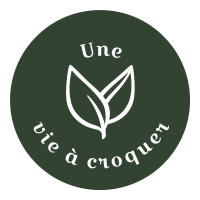The purple line indicates the border of the V10Gy ISV, the red delineation represents the prostate PTV and the green delineation shows the PTV_PVS (prostate and vesicular seminalis). The rectum and bladder was indicated with blue and yellow color, respectively.
Lymphocytes, which happen to be thought to be a surrogate typical cells in the biodosimetry, move from the irradiated volumes consequently they are consistently changed by newer ones. Thus, only due to the irradiated volume can result in erroneous dose estimate as the a tall irradiated volume will not necessarily mean a good greater biological effect. In view of your own above, there can be a need for a survey you to explores the outcome regarding irradiated quantities on biological dosage during the radiotherapy.
There is a large number of courses about dosimetric computation or in vivo dosimetry during the radiotherapy, however, considering the degree books writing about the brand new dictate off isodose facial skin volumes towards biological dosimetric viewpoints are nevertheless destroyed. Furthermore, most of the analyses off volumetric study fool around with body organ related amounts, hence they’re not applicable for chromosome aberrations.
SOMMAIRE DE L'ARTICLE
Results
The following isodose surface volumes (ISVs)  of absolute and relative doses were recorded: V1%, V1Gy, V10%, V10Gy, V100%, V150% (Table 1) (except V1% in the case of HDR therapy, discussed below). These volumes cover all the irradiated volumes getting at least a minimum of these doses, regardless of the affected organs. The variability in ISVs was high among patients. For the sake of example, the highest ratio of maximum to minimum was 3.9 for V150% in HDR therapy. The higher ratios can be seen at higher doses in all therapies, but the highest differences were found mostly in HDR therapy (Table 1).
of absolute and relative doses were recorded: V1%, V1Gy, V10%, V10Gy, V100%, V150% (Table 1) (except V1% in the case of HDR therapy, discussed below). These volumes cover all the irradiated volumes getting at least a minimum of these doses, regardless of the affected organs. The variability in ISVs was high among patients. For the sake of example, the highest ratio of maximum to minimum was 3.9 for V150% in HDR therapy. The higher ratios can be seen at higher doses in all therapies, but the highest differences were found mostly in HDR therapy (Table 1).
Analysis off quantities ranging from therapy
The prescribed doses were different for the three modalities, consequently the absolute and relative doses also vary. Patients with bigger prostate (more than 60 cm 3 ) are not eligible for brachytherapy, furthermore in EBRT extra margin was added around the prostate to get PTV, therefore all average ISVs of the EBRT patients were considerably larger than those of the BT patients. For example, the mean V100% of LDR patients was 2.4 times smaller than that of the EBRT patients, and the ratio was 3.6 for V1Gy (Table 1). Although the V100% values of HDR and LDR therapy did not differ significantly, the average V10% in HDR is 2.0 times larger than that in LDR therapy (Table 1).
Evaluation from chromosome aberrations
Baseline values of total aberrations obtained prior to the treatment (2.2; 4.0; 2.9 for HDR, EBRT and LDR therapy, respectively) were less than the cutoff limit used in our laboratory for healthy people (5 aberrations/100 cells) in every modality (Fig. 2a). Total aberrations were increased to 4.3; 12.1 and 2.9 total aberrations/100 cells for HDR, EBRT and LDR therapy, respectively (significantly different between HDR and EBRT baseline and post radiotherapy) right after radiotherapy. However, after seed therapy the highest growth was seen in the first 3 months interval (from 2.9 to 6.5 total aberrations/100 cells, p < 0.0001). This is due to the long dose delivery of the low dose rate therapy. The chromosome aberration values are the highest after EBRT therapy in every time point. After 3 months stagnation was observed, except in the EBRT group, where a slow non-significant decrease could be seen (Fig. 2a). Only the total aberration value of the HDR group decreased to baseline levels (5 aberrations/100 cells) during the 1 year follow-up. The dicentrics and ring data showed a similar pattern with lower values (1.2; 5.4 and 0.4 dicentrics + rings/100 cells directly after the therapy for HDR, EBRT and LDR therapy, respectively and 2.1 dicentrics + rings/100 cells for LDR therapy at the third month after the therapy) (Fig. 2b).
